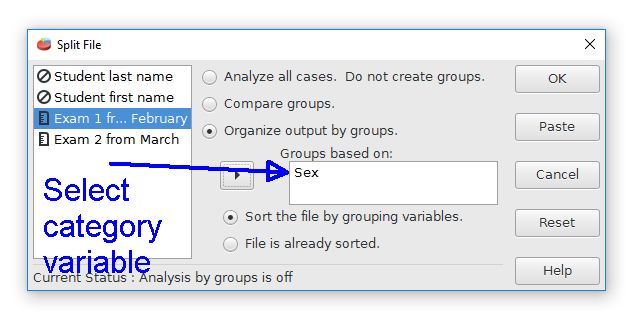

This work is licensed under a Creative Commons Attribution 4.0 International License that allows sharing, adapting, and remixing. A year from now you might not remember what the codes 1 and 2 were intended to represent. This documentation will be valuable for keeping track of what the codes mean if we refer back to this analysis at a later point in time. The labels like "male" or "female" will be included in our outputs rather than the less informative codes "1" and "2". There is no programming I just want to fill specific rows of a variable with specific values instead of doing it manually. Lets say I want to fill row 1 to 10 in my 'location' variable with the integer 1. Taking the time to document our value labels will be useful for our outputs. How can I use syntax to fill specific rows with specific variables. If your inserted syntax is expecting a different working directory definition than what is defined by the main syntax, it may have trouble finding data files it is supposed to use. SPSS just won't read characters beyond 256. The coding scheme can be entered as the value and the value label. Although primarily a point-and-click software, SPSS also has a command syntax language. When you insert a syntax file you have to make sure the lines are never more than 256 characters. The value labels field can be useful for configuring these dummy variables.Ĭlicking the three dot button in the value label field for a variable will give additional options. We can enter a 1 or 2 instead of typing in "male" or "female" for each person. Using numbers for categories will also save some valuable data entry time. These are coding an independent variable, such as group membership. This method of representing categories is sometimes called "dummy coding", with the word dummy possible being used because the values do not represent a numerical measurement. For example, males could be coded as 1 and females could be coded as 2. Categories like male/female or married/single/divorced are often represented by numbers rather than words. This may seem odd, but it shows a common practice in statistics. Note that the type of the sex variable is set to be numeric, not words like "male" or "female".

Click on the Save button (see the bottom right corner of the dialog box) to complete the saving process.

Using this extension will help PSPP find the data files in the future. A date in the file name is sometimes helpful. PSPP for Beginners PSPP for Beginners Setting up Value Labels Save the file with a descriptive, useful file name.


 0 kommentar(er)
0 kommentar(er)
